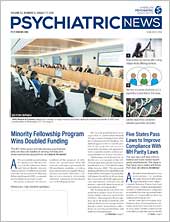Conversations that allow clients to access possibility lead to amplified self-agency and a realization that goals are realistic and attainable.
Solution-Focused Brief Therapy (SFBT) is an evidence-based approach that builds on client’s strengths, enhances positive emotion, instills hope, explores past successes, and allows clients to understand that they have the necessary resources to act on their own behalf.
Learning this therapy is not unlike learning a new language. A completely new set of skills requires the therapist to “speak” in a way that focuses on solutions rather than our “first” language, which tends to focus on problems.
The following is a list of the top 10 solution-focused questions and the intent behind the language:
10: The indirect compliment: How did you do it?
•
The indirect compliment is most often posed in the form of a question. “How did you do it?” The question is not “Did you do it?” but instead “How did you do it?” “Did” (past tense) conveys the client has indeed done it already. Noticing what the client has already done successfully enhances a sense of self-efficacy. Solving problems (challenges) requires action, which is the reasoning behind using the verb “do” (present tense). The goal of the therapist is to listen for opportunities that will allow the client to recognize past strengths that can be used in future situations.
9: What are your best hopes?
•
This is the solution-focused translation of the chief complaint (What brought you here?). The question is not “Do you have hopes?” but rather “What are your best hopes?” It is future directed and helps to create a narrative of competence.
8: What else? How else? Who else?
•
Effective solution building requires getting as many details as possible about prior successes. These questions leave no potential strength uncovered and are the metaphorical “language shovels” that dig for the details of success. What else are you good at? How else did you do it? How else was it helpful? Who else is most important to you?
7: Who are the most important people in your life, and what do you most appreciate about them?
•
Mapping out a client’s social context is critical in understanding and assisting them in building solutions. Viewing their life from other perspectives allows clients to see a broader array of possibilities. This question also reinforces positive supports.
6: What do you know?
•
“What do you know?” conveys that clients already have the knowledge and understanding of what is important in their lives. For example, asking clients what they know about marijuana, medications, or their diagnosis attests to their competence. One of my favorite questions is to ask parents “What do you know about your child that tells you he or she will succeed in life?” It continually amazes me to learn that parents are always able to answer this question, regardless of how desperate they might be feeling in the moment.
5: Have you ever had to cope with trauma, domestic violence, hurricanes, homelessness, mudslides, poverty, loss, or death?
•
Incorporating the one-word “cope” within the question demonstrates a confidence that your client has coped—has already been successful. I follow up this question with “How have you coped?,” which magnifies their success. And remember that cope is one letter away from hope.
4: You must have a good reason?
•
Asking clients about their reasons for harmful behaviors can reveal how clients view these behaviors as beneficial. The question does not condone the behavior; rather, it helps clients to understand their own motivation. This recognition leads to what they could do differently.
3: Was it different for you?
•
Noticing positive differences, also known as exceptions, are times when an expected problem could have occurred but didn’t. This leads to uncovering past successes.
2: On a scale from 1 to 10, where 10 is most satisfied and 1 is the opposite, where are you on the scale?
•
Solution-focused scaling questions are constructed in a way to highlight things such as satisfaction with relationships, confidence in the ability to keep safe, or helpfulness of medications. Asking what keeps the number from being lower uncovers strengths the client might not have even been aware of. Other helpful scaling questions: What is the highest the number has ever been? What would be a good enough number? Where would your VIPs rate the number? How would you recognize when the number increases? How confident are you that you could raise the number by one point?
1: What are you good at, and what do you enjoy?
•
This question invites the client to talk about aspects of their life that are working and reinforces that they are more than their “presenting problem.” Focusing on their accomplishments expands the narrative of their abilities and enhances engagement in treatment. ■

